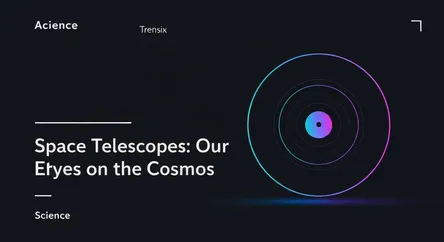Science
Space Telescopes: Our Eyes on the Cosmos

Discover how space telescopes like Hubble and James Webb orbit above Earth to capture stunning, unobstructed views of the universe's greatest wonders.
What is it?
A space telescope is an observatory in outer space used to observe distant astronomical objects. Unlike ground-based telescopes, they orbit above Earth's atmosphere, which distorts and absorbs light. This position allows them to capture incredibly clear images across the electromagnetic spectrum, from infrared to X-rays, providing data impossible to obtain from the ground. Famous examples include the Hubble Space Telescope and its powerful successor, the James Webb Space Telescope (JWST).
Why is it trending?
Space telescopes are constantly trending due to their groundbreaking discoveries. The James Webb Space Telescope, in particular, captivates the public with its unprecedented views into the early universe and the atmospheres of exoplanets. Each new data release, showcasing cosmic phenomena in stunning detail, sparks global excitement and media coverage. This steady stream of discovery from missions like JWST and Hubble keeps them at the forefront of scientific news.
How does it affect people?
Discoveries from space telescopes profoundly impact humanity by addressing fundamental questions about our origins and place in the cosmos. These missions drive technological innovation in optics, sensors, and data processing with real-world applications. Their spectacular images inspire awe and encourage interest in science and technology (STEM). Ultimately, they change our perspective, fostering a sense of wonder and global connection as we collectively gaze into the vastness of the universe.